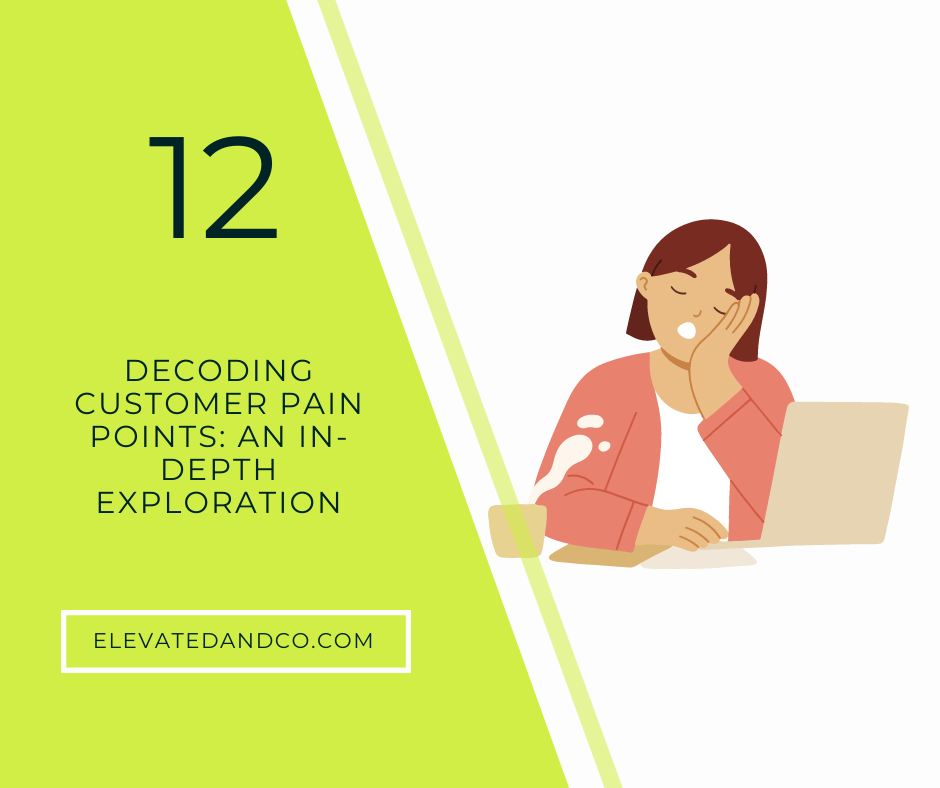Understanding the rhythm of your customer’s desires and challenges is paramount. The key to this profound understanding? Deciphering the pain points of your customers. Dive into this comprehensive guide that unravels these pain points through the lenses of Research, Assumptions, Empathy, and the digital pulse of Social Media Listening.
The Art of Research
Embarking on the journey to uncover customer pain points begins with meticulous research. This encompasses a myriad of techniques, from surveys and interviews to the real-time pulse of social media listening and the intimacy of focus groups. By engaging directly with your customers, you unearth invaluable insights into their experiences, desires, and hurdles. While surveys cast a wide net, capturing the sentiments of a vast audience, interviews and focus groups delve deeper, offering a more nuanced understanding.
Navigating Assumptions
While data-driven insights are the bedrock of understanding pain points, there’s also a place for educated assumptions. Drawing from industry expertise, market dynamics, and prevalent customer challenges, these assumptions can offer preliminary insights. However, the key lies in validating these assumptions with concrete research, ensuring strategies are rooted in genuine customer needs rather than mere speculation.
Empathy: The Heartbeat of Understanding
Empathy is more than a tool; it’s the very essence of understanding customer pain points. Stepping into your customers’ shoes offers a unique vantage point, illuminating their experiences and challenges. This introspection prompts questions like: What emotions stir within a customer using your product? Where might they encounter friction? What unmet desires linger? Such empathetic insights can reveal pain points that might otherwise remain obscured.
Social Media: The Digital Echo Chamber
In our digital era, social media platforms are a goldmine of customer sentiment. Monitoring these channels can offer a candid glimpse into your customer’s pain points. From comments to direct messages, every interaction is a potential clue. But don’t just limit yourself to your channels. Observing conversations around competitors can offer insights into industry-wide pain points, positioning you to differentiate your brand.
The Secret Behaviors of Customers Unveiled: A Dive into Sensory Marketing
Customer behavior is akin to a riveting novel, filled with twists, motivations, and intricate character developments. It’s a narrative of why customers make certain choices, their driving forces, and their interactions with products and services. Central to this narrative is the often-underestimated role of sensory experiences. Our senses, after all, are the gateways to our perceptions and interactions.
Observing and Deciphering Customer Behavior
To truly grasp customer behavior, one must employ a blend of research techniques, from surveys and interviews to observational studies. These methods shed light on how customers engage with products, their likes and dislikes, and the factors swaying their decisions. Yet, to delve deeper, businesses must venture beyond traditional methods, exploring the sensory realm—how products are seen, touched, smelled, tasted, and heard.
Sensory Experiences: The Silent Influencers
Our senses are powerful arbiters of our perceptions and decisions. They can shape our view of a product, evoke emotions, and influence our buying choices. The texture of a fabric, the aroma of a dish, or the hum of a gadget can significantly impact our perceptions. Recognizing this, businesses can pinpoint potential pain points and areas of enhancement, crafting experiences that resonate on a sensory level.
Case Studies: The Sensory Impact in Action
- The Coffee Connoisseur: A local cafe might find patrons often remarking on the comforting aroma of freshly brewed coffee. Capitalizing on this, the cafe could amplify this sensory experience, ensuring the inviting scent is ever-present and even weaving it into their marketing narrative.
- The Fashion Forward: A clothing brand might observe customers frequently feeling fabric textures. Responding to this tactile behavior, the brand could prioritize premium, comfortable materials, and design their store to encourage tactile exploration.
- The Tech Titan: A tech firm might discern that users relish the tactile feedback of a premium keyboard. This insight could steer product development, emphasizing tactile experiences that resonate with users.
By understanding these subtle behaviors, businesses can unearth invaluable insights. These insights, when applied, can enhance products and services, crafting experiences that genuinely resonate with customers. In subsequent chapters, we’ll delve into how this understanding can be integrated into a sensory approach, refining the identification and addressing of customer pain points.
The Secret Behaviors of Customers Revealed: Crafting Buyer Personas for Precision Marketing
In the marketing cosmos, decoding customer behavior is akin to solving a captivating enigma. It’s a quest to fathom the motivations, inclinations, and interactions of consumers with products and services. Amidst this complex tapestry, one tool stands out, illuminating the path—The Buyer Persona.
The Buyer Persona: Your Ideal Customer Blueprint
A Buyer Persona is not just a profile; it’s a vivid portrayal of your ideal customer, sculpted from market research and real-time customer data. It transcends mere demographics, delving into motivations, aspirations, pain points, and challenges. Crafting these personas empowers businesses to resonate deeper, aligning marketing strategies and offerings with specific needs.
The Power of Buyer Personas in Strategy Formulation
- Human-Centric Focus: Buyer personas breathe life into the target audience, transforming faceless data points into tangible, relatable entities. This human touch fosters genuine connections, nurturing brand loyalty.
- Tailored Messaging: Armed with insights from buyer personas, marketers can craft messages that echo the sentiments of specific customer segments, ensuring relevance and impact.
- Product Evolution: Buyer personas offer a window into genuine customer needs, guiding product development to address specific pain points and aspirations.
- Precision Campaigns: Defined buyer personas enable laser-focused campaigns, ensuring the right message reaches the right audience through optimal channels.
- Elevated Customer Experience: By catering to the unique pain points and preferences of buyer personas, businesses can offer personalized experiences, fostering satisfaction and loyalty.
- Strategic Edge: In a bustling market, understanding customer behavior through buyer personas offers a competitive advantage, spotlighting niche opportunities and crafting distinct value propositions.

